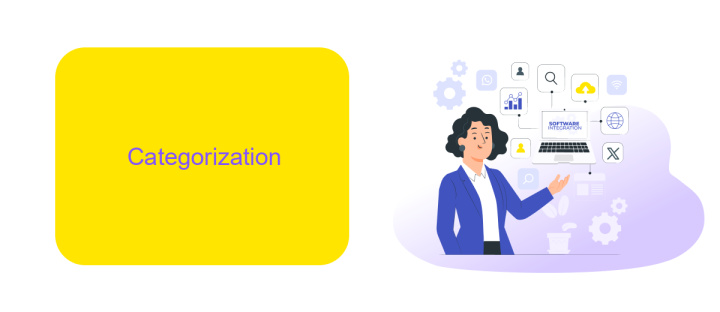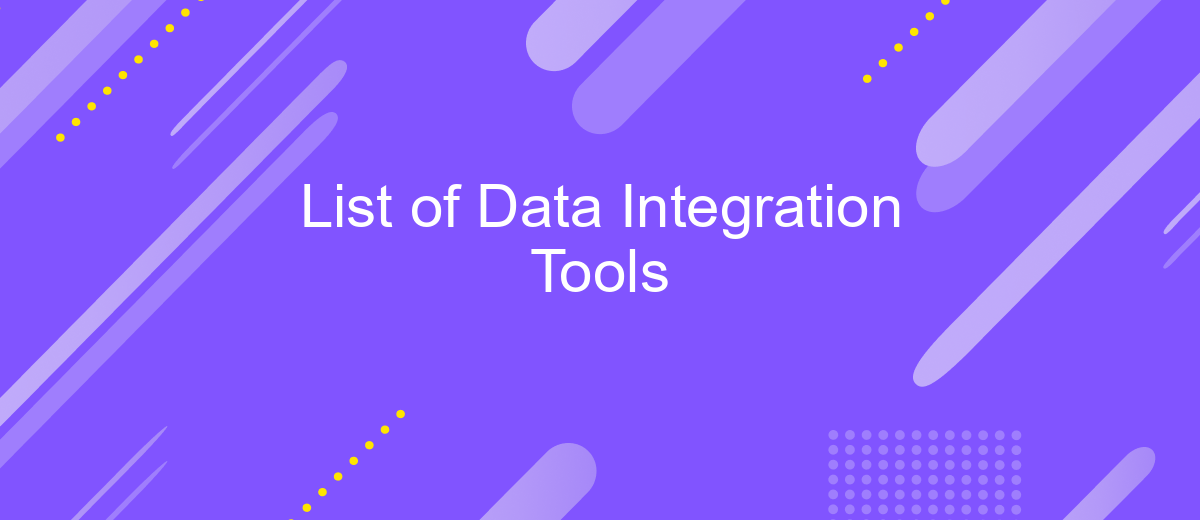List of Data Integration Tools
Data integration tools are essential for businesses seeking to unify disparate data sources, streamline workflows, and gain comprehensive insights. These tools facilitate the seamless merging, transformation, and synchronization of data across various platforms and applications. In this article, we provide an overview of some of the most popular and effective data integration tools available, highlighting their key features and benefits.
Introduction
Data integration tools are essential for businesses looking to synchronize and manage data across multiple systems and platforms. These tools help streamline operations, enhance data accuracy, and improve decision-making processes by providing a unified view of information. With the growing complexity of data ecosystems, the need for efficient data integration solutions has never been greater.
- ETL (Extract, Transform, Load) Tools
- Data Warehousing Solutions
- API Integration Platforms
- Cloud-based Data Integration Services
- Real-time Data Integration Tools
One notable service in this domain is ApiX-Drive, which offers a user-friendly platform for automating data flows between various applications. By leveraging such tools, businesses can reduce manual data handling, minimize errors, and ensure that their systems are always up-to-date. Understanding and choosing the right data integration tool is crucial for maintaining a competitive edge in today's data-driven world.
Categorization

Data integration tools can be broadly categorized based on their primary functions and deployment methods. The main categories include ETL (Extract, Transform, Load) tools, data replication tools, data virtualization tools, and iPaaS (Integration Platform as a Service). ETL tools are designed to extract data from various sources, transform it into a suitable format, and load it into a target system. Data replication tools focus on copying data from one database to another, ensuring real-time consistency. Data virtualization tools allow users to access and manipulate data without needing to know where it is physically stored.
iPaaS solutions, such as ApiX-Drive, offer a comprehensive platform for integrating various applications and services seamlessly. These tools enable businesses to automate workflows, synchronize data across different systems, and streamline operations without requiring extensive coding knowledge. ApiX-Drive, for instance, provides a user-friendly interface to connect multiple services, facilitating real-time data exchange and reducing manual intervention. By leveraging such tools, organizations can enhance their data integration processes, improve data accuracy, and achieve greater operational efficiency.
Comparison of data integration tools

Data integration tools are essential for combining data from different sources into a unified view, enabling organizations to make informed decisions. These tools vary in features, complexity, and cost, making it crucial to compare them based on specific criteria.
- Ease of Use: Some tools offer a user-friendly interface that allows non-technical users to set up integrations quickly. For example, ApiX-Drive provides an intuitive platform that simplifies the integration process.
- Scalability: The ability to handle increasing volumes of data is critical. Tools like Talend and Informatica are known for their robust scalability features.
- Cost: Pricing models can vary significantly, from open-source options like Apache Nifi to premium solutions like Microsoft Azure Data Factory.
- Support and Community: Tools with extensive support and active communities, such as MuleSoft, can be advantageous for troubleshooting and learning.
Choosing the right data integration tool depends on your organization's specific needs, budget, and technical expertise. While some tools excel in ease of use, others offer advanced features and scalability. Evaluating these factors will help you select the most suitable tool for your data integration requirements.
Selection criteria

When selecting a data integration tool, it's crucial to consider several factors to ensure it meets your organization's needs. The right tool should efficiently connect various data sources, streamline workflows, and enhance data accuracy.
First, evaluate the tool's compatibility with your existing systems. It should support a wide range of data formats and integration protocols. Additionally, consider the ease of use and the learning curve associated with the tool. A user-friendly interface can significantly reduce the time and effort required for implementation.
- Compatibility with existing systems
- Ease of use and learning curve
- Data transformation and cleansing capabilities
- Scalability to handle growing data volumes
- Security features to protect sensitive information
Moreover, it's beneficial to look for tools that offer robust customer support and regular updates. Services like ApiX-Drive can be particularly advantageous, as they provide seamless integration setups and automate data transfers between various platforms. Ultimately, the chosen tool should align with your business goals and enhance overall data management efficiency.
Future trends
As the landscape of data integration continues to evolve, several future trends are emerging that promise to reshape how organizations manage and utilize their data. One of the most significant trends is the increasing adoption of artificial intelligence and machine learning to automate data integration processes. These technologies enable more efficient data mapping, error detection, and real-time data synchronization, reducing the need for manual intervention and enhancing overall data accuracy.
Another notable trend is the growing popularity of low-code and no-code integration platforms, such as ApiX-Drive, which empower non-technical users to set up and manage integrations with minimal coding knowledge. These platforms offer intuitive interfaces and pre-built connectors, making it easier for businesses to integrate disparate systems quickly and cost-effectively. Additionally, the rise of cloud-based integration solutions is enabling more scalable and flexible data management, allowing organizations to seamlessly connect on-premises and cloud applications, thereby ensuring continuous data flow and accessibility.
FAQ
What is data integration?
Why is data integration important for businesses?
What are some common features of data integration tools?
How can automation benefit the data integration process?
What should I consider when choosing a data integration tool?
Apix-Drive is a universal tool that will quickly streamline any workflow, freeing you from routine and possible financial losses. Try ApiX-Drive in action and see how useful it is for you personally. In the meantime, when you are setting up connections between systems, think about where you are investing your free time, because now you will have much more of it.

